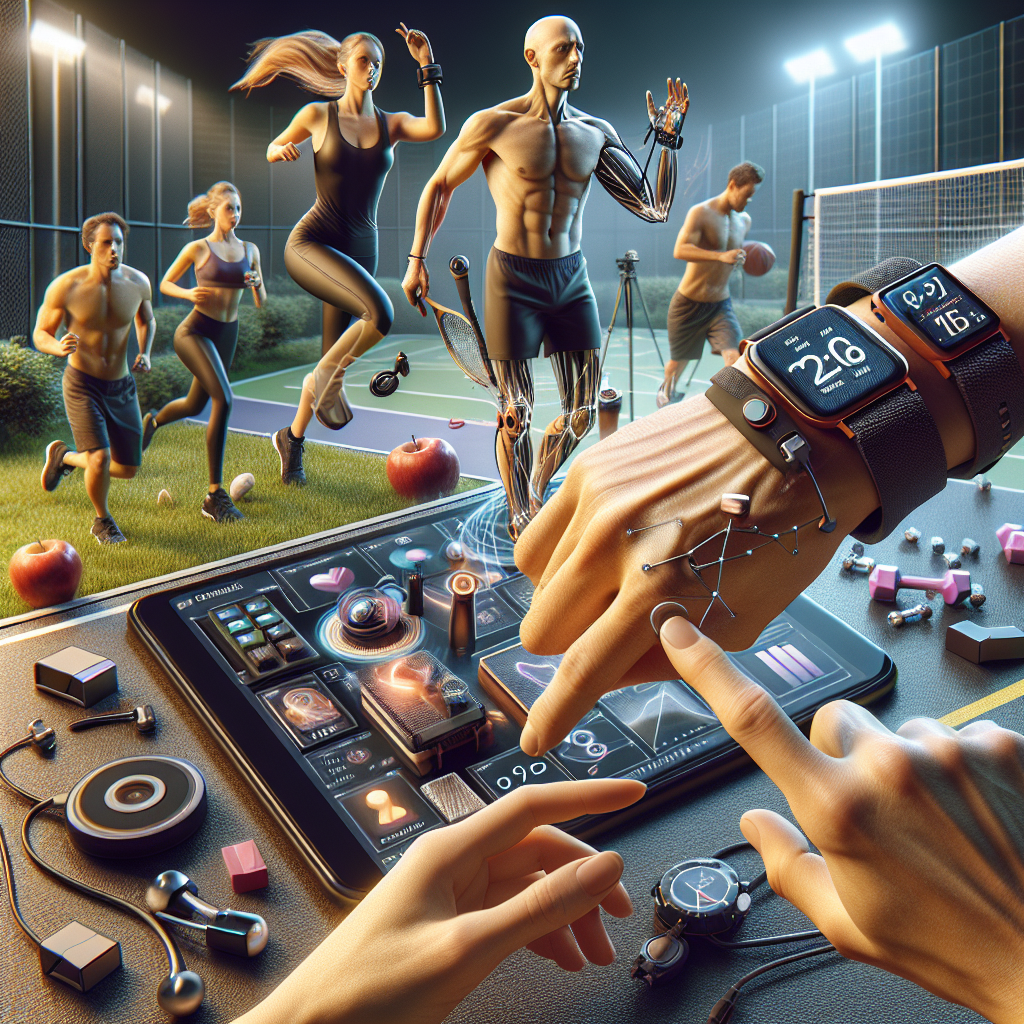In the realm of wearable technology, optimizing the synchronization of fitness data is crucial for enhancing user experience. This process involves ensuring that data collected from fitness trackers and smartwatches is seamlessly transmitted to connected devices and applications. Effective synchronization not only boosts the accuracy and timeliness of information but also enhances user engagement and satisfaction. As wearable technology continues to evolve, refining data synchronization processes is paramount for developers and users alike.
The Importance of Seamless Data Synchronization
The integration of wearable fitness devices into daily life relies heavily on their ability to provide accurate, real-time data. Seamless synchronization ensures that users can access their fitness metrics without delays or interruptions, which is critical for maintaining motivation and tracking progress.
- Real-Time Access: Users expect instant access to their fitness data, including steps taken, heart rate, and calories burned. Rapid synchronization enables this accessibility.
- User Engagement: Consistent data flow keeps users engaged by providing immediate feedback on their performance, encouraging them to reach their goals.
- Data Accuracy: Accurate synchronization minimizes discrepancies, ensuring that users can trust the information they’re receiving.
Challenges in Wearable Fitness Data Synchronization
Despite its importance, achieving seamless data synchronization poses several challenges:
- Data Volume: Wearable devices generate large volumes of data, which can overwhelm networks and devices if not managed properly.
- Network Connectivity: Syncing data requires stable internet connectivity, which can be inconsistent in certain environments.
- Device Compatibility: Ensuring compatibility across various devices and operating systems can complicate synchronization efforts.
Technological Approaches to Enhance Synchronization
Several technological solutions can enhance the synchronization process, ensuring a seamless user experience:
Cloud-Based Synchronization
Cloud technology enables efficient data storage and retrieval, allowing users to access their fitness data from multiple devices:
- Scalability: Cloud platforms can handle large data volumes, ensuring smooth synchronization without bottlenecks.
- Accessibility: Data stored in the cloud is accessible from anywhere, providing flexibility for users.
Bluetooth Low Energy (BLE)
BLE technology facilitates energy-efficient data transfer between devices:
- Energy Efficiency: BLE conserves battery life, ensuring longer device usage without frequent recharging.
- Fast Data Transfer: BLE offers quick data transmission, reducing synchronization time.
Data Compression Techniques
Compressing data before transmission can significantly reduce synchronization times and network strain:
- Reduced Bandwidth Usage: Compressed data requires less bandwidth, facilitating quicker transfers.
- Enhanced Speed: Smaller data packets are transmitted faster, minimizing latency.
Best Practices for Developers
Developers play a crucial role in optimizing data synchronization. By implementing best practices, they can significantly enhance the user experience:
- Regular Updates: Consistently updating software ensures compatibility with the latest devices and operating systems.
- Testing for Compatibility: Thorough testing across different devices and platforms is essential to ensure seamless synchronization.
- User Feedback Incorporation: Actively incorporating user feedback helps identify and address synchronization issues.
Role of Artificial Intelligence and Machine Learning
AI and ML technologies can significantly enhance data synchronization by predicting and addressing potential issues before they arise:
- Predictive Analytics: AI can anticipate synchronization problems and optimize processes preemptively.
- Automated Troubleshooting: ML algorithms can automatically resolve synchronization errors, minimizing user intervention.
Case Studies and Statistics
Exploring real-world examples and statistics can provide valuable insights into the effectiveness of various synchronization strategies:
Case Study: Fitbit’s Synchronization Success
Fitbit, a leader in wearable technology, has implemented several strategies to enhance data synchronization:
- Cross-Platform Compatibility: Fitbit devices are compatible with both iOS and Android, ensuring broad accessibility.
- Seamless App Integration: The Fitbit app seamlessly integrates with other fitness and health applications, providing a comprehensive user experience.
Statistical Insights
| Statistic | Value |
|---|---|
| Global Wearable Device Market Size (2023) | $58.3 billion |
| Expected Annual Growth Rate | 15.3% |
| Percentage of Users Reporting Sync Issues | 23% |
Future Trends in Wearable Data Synchronization
As technology advances, several trends are expected to shape the future of wearable data synchronization:
Integration with IoT Devices
The Internet of Things (IoT) will play a significant role in the future of wearable data synchronization:
- Interconnectivity: Wearable devices will communicate seamlessly with other IoT devices, creating a cohesive ecosystem.
- Enhanced Automation: IoT integration will enable automated data collection and synchronization, reducing the need for manual intervention.
Advancements in 5G Technology
5G technology promises to revolutionize data synchronization with its high-speed capabilities:
- Ultra-Low Latency: 5G networks offer extremely low latency, facilitating real-time data synchronization.
- Increased Bandwidth: The expanded bandwidth of 5G networks will accommodate larger data volumes, enhancing synchronization efficiency.
Enhanced Data Security Measures
With the increasing importance of data security, enhanced measures will be crucial for protecting user data during synchronization:
- End-to-End Encryption: Implementing robust encryption protocols will ensure the security of data in transit.
- Secure Authentication: Advanced authentication methods will safeguard user data from unauthorized access.
Conclusion
Optimizing wearable fitness data synchronization is essential for providing a seamless user experience. By addressing challenges and leveraging advanced technologies, developers can enhance data accuracy, speed, and security. As the wearable technology market continues to grow, prioritizing synchronization optimization will remain key to meeting user expectations and driving engagement.
Transform Your Fitness Journey Today!
Unlock the Power of AI with PurelyFit
Tired of the same old fitness routines and diet plans that don’t work? It’s time to experience the future of fitness with PurelyFit’s AI-driven workouts and personalized nutrition plans. Whether you’re a beginner or have tried everything before, our adaptive programs are designed to suit your unique goals and lifestyle.
Say goodbye to expensive trainers and confusing diets—achieve your fitness goals faster and smarter. Join thousands who are already transforming their lives with our innovative approach.
Take the first step towards a healthier you. Your transformation starts now!













